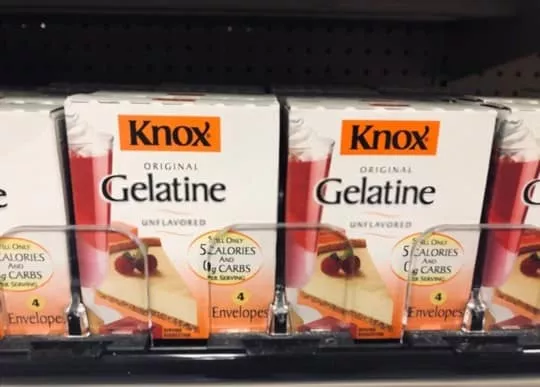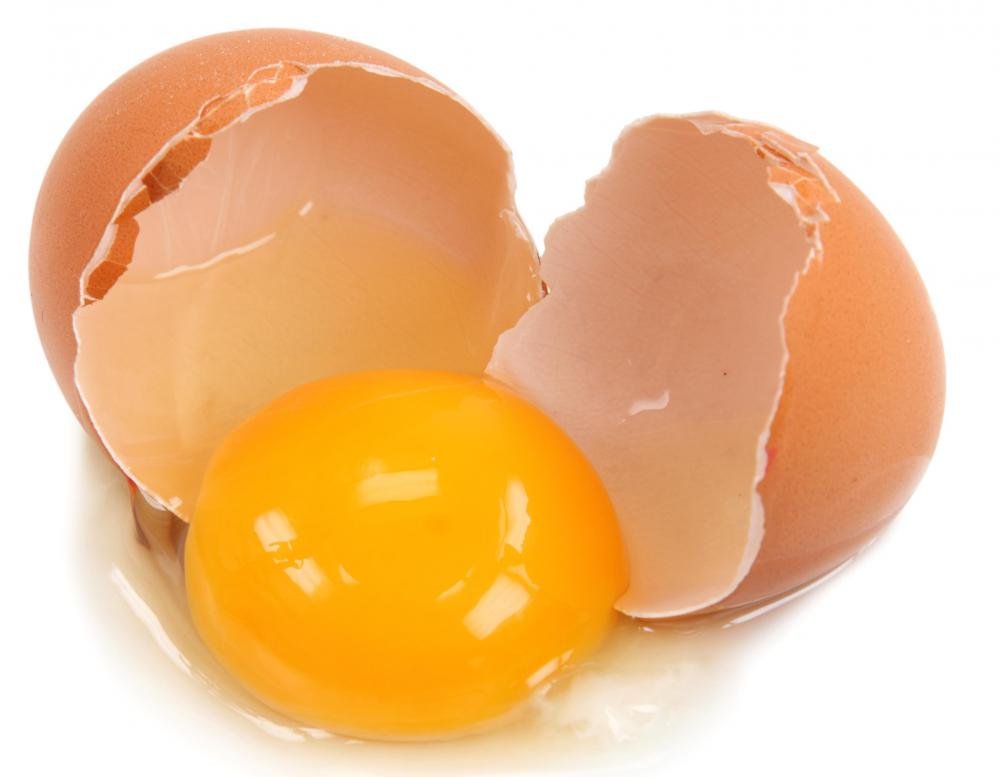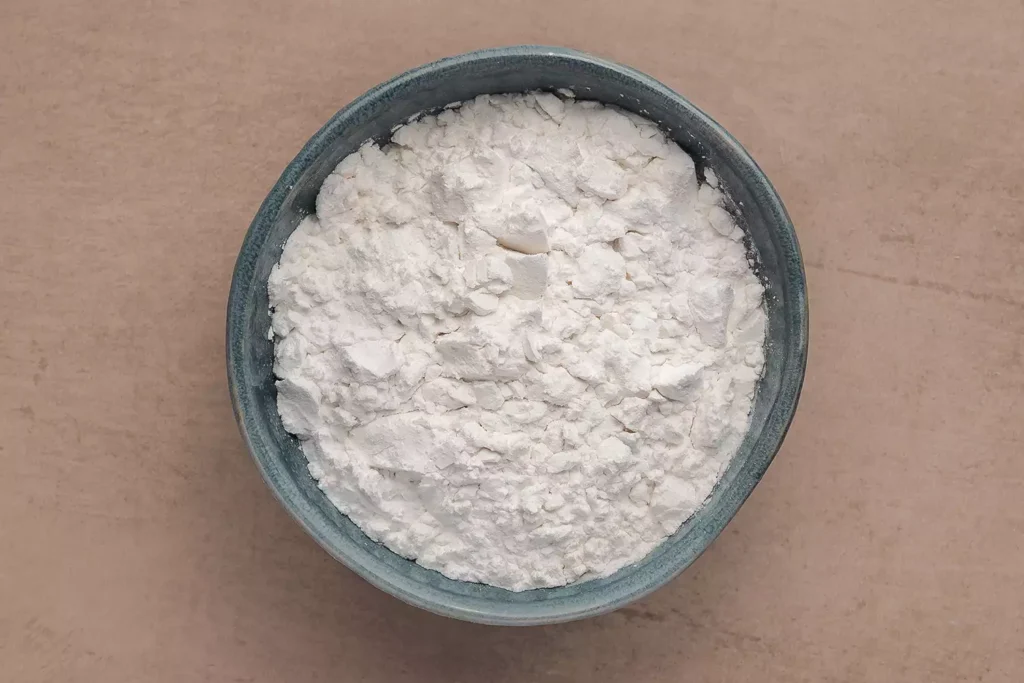Are you looking for an alternative to thicken up your recipes?
Xanthan gum is an incredibly versatile ingredient that can be used as a thickener, stabilizer, emulsifier, and more.
It’s also widely available in stores and online, making it easy to find.
But what happens when you don’t have access to xanthan gum?
If so, you might be wondering what other ingredients can be used in place of xanthan gum.
Here are 10 of the best substitutes for xanthan gum that will help give your recipes the perfect texture without compromising on taste or quality.
What is Xanthan Gum?

Xanthan gum is a thickening agent derived from plant-based sources, most commonly corn sugar.
It’s an incredibly versatile ingredient used in cooking and baking, as well as many household products.
When added to liquids or other ingredients, it helps give them a thicker consistency and also binds them together.
It can also be used to add texture to foods such as salad dressings and sauces, giving them a smoother mouthfeel without altering the flavor too much.
Because of its unique properties, xanthan gum has been widely adopted by the food industry for use in processed foods like ice cream and yogurts.
It can even be used as an egg replacer in vegan recipes!
In addition to its culinary applications, xanthan gum is found in cosmetics and pharmaceuticals due to its ability to stabilize emulsions and keep ingredients suspended/dispersed throughout a product.
The 10 Best Substitutes For Xanthan Gum
Xanthan gum is a popular ingredient in baking recipes, but it can be hard to find.
Fortunately, there are several great substitutes that can be used in its place.
Here we look at the 10 best alternatives for xanthan gum:
1 – Cornstarch

Cornstarch is a versatile ingredient that can be used as a thickener, binder, or stabilizer in many recipes.
It’s made from the endosperm of corn kernels and has a neutral flavor.
When added to liquids, it forms a paste-like consistency that helps thicken sauces and gravies without altering their flavors.
Cornstarch can also be used to replace xanthan gum in baking recipes like cakes, cookies, muffins, and breads.
Though it won’t provide the same binding power as xanthan gum does, it will still help create structure in doughs and batters while providing moisture retention for baked goods.
For best results when substituting cornstarch for xanthan gum in baking recipes, use half the amount of cornstarch called for in the recipe.
2 – Unflavored Gelatin

Unflavored gelatin is a versatile ingredient that can be used to thicken, stabilize, and add texture to recipes.
It’s made from animal collagen and comes in the form of powder or sheets.
When combined with liquid, it turns into a gel-like substance that has many uses in cooking and baking.
For example, it can be used as an egg substitute for vegan dishes or to make creamy sauces thicker.
As an alternative to xanthan gum, unflavored gelatin can help bind ingredients together while providing structure and stability.
It’s also great for making jellies, marshmallows, custards, mousses, puddings and more!
3 – Egg Whites

Egg whites are a great substitute for xanthan gum when it comes to baking.
They provide the same binding and thickening properties as xanthan gum, but without the added cost or potential allergen concerns.
Egg whites can be used in place of xanthan gum in most recipes, although they may not work as well in some applications.
To use egg whites as a substitute, whisk them together until foamy and then add them to your recipe at the same time you would have added the xanthan gum.
This will help bind ingredients together and give your baked goods an extra boost of protein.
4 – Arrowroot Flour

Arrowroot flour is a gluten-free and vegan alternative to xanthan gum.
It’s made from the root of the arrowroot plant, which is native to tropical regions of the world.
The powdery white substance has a mild flavor and can be used as a thickening agent in sauces, soups, and baking recipes.
Unlike xanthan gum, arrowroot flour won’t leave behind an unpleasant aftertaste.
It also doesn’t need to be heated before use, making it easier to work with than other thickeners.
When using arrowroot flour as a substitute for xanthan gum in baking recipes, you’ll want to use twice as much arrowroot flour as you would have used xanthan gum.
Arrowroot flour is an excellent choice for those looking for an easy-to-use and natural thickener that won’t compromise on taste or texture!
5 – Psyllium Husk

Psyllium husk is a natural, plant-based fiber that can be used as an alternative to xanthan gum.
It’s made from the ground husks of psyllium seeds and has a slightly sweet flavor with a hint of nuttiness.
Psyllium husk is often used in baking recipes as it helps bind ingredients together and gives baked goods structure without changing their texture.
It also helps keep breads and cakes moist by absorbing liquid, which makes it a great substitute for xanthan gum in gluten-free recipes.
When substituting psyllium husk for xanthan gum, use half the amount listed in the recipe since psyllium absorbs more liquid than xanthan gum.
Overall, psyllium husk is an excellent choice for anyone looking to add dietary fiber to their diet while still creating delicious treats!
6 – Chia seeds and water

Chia seeds and water can make an excellent substitute for xanthan gum in baking recipes.
When combined with water, the chia seeds form a gel-like texture that mimics the binding properties of xanthan gum.
To use this substitute, mix 1 tablespoon of chia seeds with 3 tablespoons of water and let sit until it forms a thick paste.
This mixture should be added to your recipe in place of the xanthan gum.
The advantage of using chia seed and water is that it’s all natural and free from additives or preservatives found in some store-bought gums.
Plus, it’s much cheaper than buying xanthan gum!
Chia seed and water can also be used as a vegan egg replacer when making cakes or muffins – just add 1 tablespoon of the mixture per egg required by your recipe.
7 – Ground flax seeds and water

Ground flax seeds and water can be an excellent alternative to xanthan gum.
Flaxseed is a great source of fiber, omega-3 fatty acids, and antioxidants.
When combined with water, it forms a thick gel that can be used as a binder or thickener in recipes.
To use this combination as a substitute for xanthan gum, mix one tablespoon of ground flaxseed with three tablespoons of warm water until it forms a paste.
This mixture should be added to the recipe at the same time you would add xanthan gum.
Ground flax seeds and water are especially useful when making gluten-free baked goods like breads or muffins, as they help create structure without relying on wheat flour’s gluten proteins.
They also work well in sauces, dressings, and gravies to give them extra body and texture.
8 – Agar agar

Agar agar is a vegan-friendly, gluten-free alternative to xanthan gum.
It’s made from seaweed and is often used as a thickening agent in place of animal-based gelatin.
Agar agar has a neutral flavor and can be used in both sweet and savory dishes.
When dissolved in hot liquid, it forms a gel that can be added to soups, sauces, puddings, jams, jellies, custards and more.
It also works well as an egg replacer for baking recipes such as cakes or muffins.
For best results when substituting agar agar for xanthan gum, use the same amount called for in the recipe but dissolve it with boiling water first before adding it to your mixture.
9 – Guar gum

Guar gum is a natural thickening agent derived from guar beans, which are grown in India and Pakistan.
It has many of the same properties as xanthan gum, such as its ability to thicken liquids and stabilize emulsions.
The main difference between the two gums is that guar gum is more economical and easier to find than xanthan gum.
Guar gum can be used as an alternative for baking applications like breads, cakes, muffins, and cookies.
It can also be used in soups, sauces, dressings, ice cream bases, and other recipes that call for a thickener or stabilizer.
When substituting guar gum for xanthan gum in recipes, use half the amount of guar gum called for in the recipe since it’s twice as powerful.
10 – Konjac powder
Konjac powder is a versatile thickening agent made from the root of the konjac plant.
It has been used in traditional Japanese cooking for centuries, and is now gaining popularity as an alternative to xanthan gum.
Konjac powder can be used to thicken sauces, soups, and gravies without altering the taste or texture.
It also helps keep ingredients like chocolate chips suspended in batters and doughs.
When using it as a substitute for xanthan gum, it’s important to remember that Konjac powder needs to be mixed with liquid before being added to recipes.
This will help ensure even distribution throughout your dish.
Konjac powder is a great choice for those looking for an all-natural way to achieve desired textures in their cooking without compromising on flavor.
Conclusion
In conclusion, xanthan gum is an incredibly versatile ingredient that can be used to thicken, bind, and stabilize many recipes.
However, it can be difficult to find or expensive to buy.
Fortunately, there are several great alternatives for xanthan gum that can be used in its place.
The 10 best substitutes for xanthan gum are cornstarch, unflavored gelatin, egg whites, arrowroot flour, psyllium husk, chia seeds and water, ground flax seeds and water, agar agar, guar gum, and konjac powder.
Each of these ingredients has its own unique properties and can be used to achieve desired textures in recipes without compromising on flavor or quality.

The 10 Best Substitutes For Xanthan Gum
Ingredients
- Cornstarch
- Unflavored Gelatin
- Egg Whites
- Arrowroot Flour
- Psyllium Husk
- Chia seeds and water
- Ground flax seeds and water
- Agar agar
- Guar gum
- Konjac powder
Instructions
- Pick your favorite substitute from the list above.
- Follow cooking directions for your selected substitute with the proper ratio of ingredients.
Hi, I'm Benjamin. I love cooking, long walks, and my girlfriend! Here you’ll find simple and delicious recipes that you can make in 30 minutes or less.

